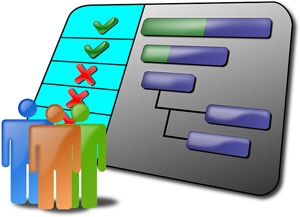November 2, 2020
We Have A Scheduling Conflict
By Michael D. Shaw
The notion of Drug “Scheduling” came out of the Controlled Substances Act (Effective May 1, 1971). Five different schedules of controlled substances were defined, identified with Roman numerals (I-V). As a bit of trivia, many so-called authorities will refer to these schedules with Arabic numbers (1-5).
Assignment of a drug to a particular schedule is based on these three factors…
- Potential for abuse: How likely is this drug to be abused?
- Accepted medical use: Is this drug used as a treatment in the United States?
- Safety and potential for addiction: Is this drug safe? How likely is this drug to cause addiction? What kinds of addiction?
Schedule I includes drugs with no currently accepted medical use and a high potential for abuse. e.g. heroin, lysergic acid diethylamide (LSD), marijuana (cannabis), 3,4-methylenedioxymethamphetamine (ecstasy), methaqualone, and peyote.
Schedule II includes drugs with a high potential for abuse, with use potentially leading to severe psychological or physical dependence. e.g. Products with less than 15 milligrams of hydrocodone per dosage unit (Vicodin), cocaine, methamphetamine, methadone, hydromorphone (Dilaudid), meperidine (Demerol), oxycodone (OxyContin), fentanyl, Dexedrine, Adderall, and Ritalin.
Schedule III includes drugs with a moderate to low potential for physical and psychological dependence. e.g. Products containing less than 90 milligrams of codeine per dosage unit (Tylenol with codeine), ketamine, anabolic steroids, testosterone.
Schedule IV includes drugs with a low potential for abuse and low risk of dependence. e.g. Xanax, Soma, Darvon, Darvocet, Valium, Ativan, Talwin, Ambien, Tramadol.
Schedule V includes drugs with lower potential for abuse than Schedule IV. e.g. cough preparations with less than 200 milligrams of codeine or per 100 milliliters (Robitussin AC), Lomotil, Motofen, Lyrica, Parepectolin.
Here is the full list of scheduled drugs.
Even a casual observer will note a most glaring issue: Given the touted medical benefits of cannabis derivatives (especially Cannabidiol—CBD), how can it be stated that cannabis has “no currently accepted medical use.”
You may have heard of Charlotte Figi, the now sadly deceased girl, who suffered from the devastating effects of Dravet Syndrome. Among other symptoms, she was plagued with up to 300 grand mal seizures per week. Upon treatment with CBD, these episodes were reduced to only a few per month.
The particular CBD product used by her was given the name “Charlotte’s Web,” and featured a very low amount of the psychotropic Tetrahydrocannabinol (THC). Of course, the obvious therapeutic benefit of the extract was deemed “merely anecdotal” by a hallelujah chorus of Big Pharma fanboys and regulatory zealots. Thus, it took Greenwich Biosciences, who went through the approval process, to have its Epidiolex become the only FDA-approved CBD isolate.
Ironically, Epidiolex is only a proprietary drug by regulatory definition, since CBD had been used for years before the approval. Moreover, even though it is only a slightly purer version of CBD than Charlotte’s Web, Epidiolex—and only Epidiolex—was de-scheduled.
Previously, Epidiolex was considered Schedule V, only because its THC was at 0.1%, as opposed to the more common 0.3% standard. Good luck finding any science behind that distinction. At this point, a CBD isolate with a THC concentration more than 0.3% is still in Schedule I. Do people get high at 0.3%? Fat chance, and why would they even mess with this if they can easily obtain full-strength marijuana?
Cannabis attorney Robert Hoban argues that CBD has never been a controlled substance.
While cannabis is still Schedule I, in accordance with the Farm Bill, hemp-derived CBD is not scheduled. Hemp is simply another form of cannabis, but don’t let that bother you.
Ah, you say, but all this CBD stuff is relatively recent, and the wheels of government turn slowly. Then, let me introduce you to Dronabinol, a synthetic THC, marketed under the names Marinol and Syndros. Dronabinol was FDA approved in 1985.
Again, Dronabinol is nothing more than a well-purified version of the active psychotropic ingredient in Schedule I cannabis, but due to its FDA approval is now Schedule III if in sesame oil in soft gelatin capsule (Marinol); or is Schedule II if in an oral solution (Syndros). Refer here.
The operating definition of “Currently accepted medical use” holds that a natural substance with a proven therapeutic history can only achieve this status if it is FDA approved. Please note that we are not talking about a true proprietary new drug. Rather, we are referring to little more than a putting a fancy name on an ancient substance. This is the clearest possible example of how regulation always favors big companies, and in this case hurts the consumer, as well.
No doubt, a better way to handle the approval of a natural substance would be to have the government itself pay for the clinical trials, and all interested parties could submit their particular version of the drug. But, that would be fair and logical, wouldn’t it?

